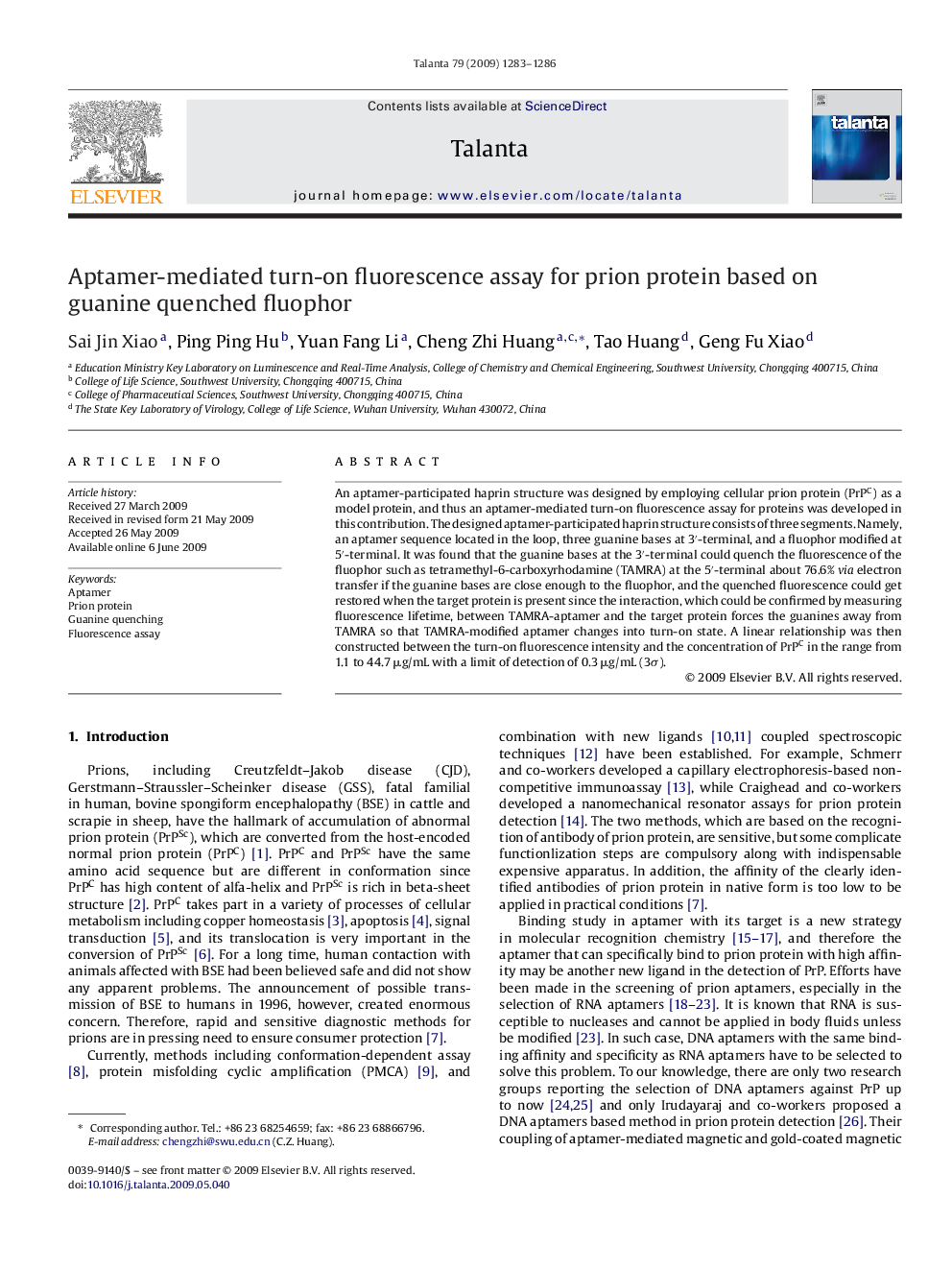| Article ID | Journal | Published Year | Pages | File Type |
|---|---|---|---|---|
| 1246823 | Talanta | 2009 | 4 Pages |
An aptamer-participated haprin structure was designed by employing cellular prion protein (PrPC) as a model protein, and thus an aptamer-mediated turn-on fluorescence assay for proteins was developed in this contribution. The designed aptamer-participated haprin structure consists of three segments. Namely, an aptamer sequence located in the loop, three guanine bases at 3′-terminal, and a fluophor modified at 5′-terminal. It was found that the guanine bases at the 3′-terminal could quench the fluorescence of the fluophor such as tetramethyl-6-carboxyrhodamine (TAMRA) at the 5′-terminal about 76.6% via electron transfer if the guanine bases are close enough to the fluophor, and the quenched fluorescence could get restored when the target protein is present since the interaction, which could be confirmed by measuring fluorescence lifetime, between TAMRA-aptamer and the target protein forces the guanines away from TAMRA so that TAMRA-modified aptamer changes into turn-on state. A linear relationship was then constructed between the turn-on fluorescence intensity and the concentration of PrPC in the range from 1.1 to 44.7 μg/mL with a limit of detection of 0.3 μg/mL (3σ).
